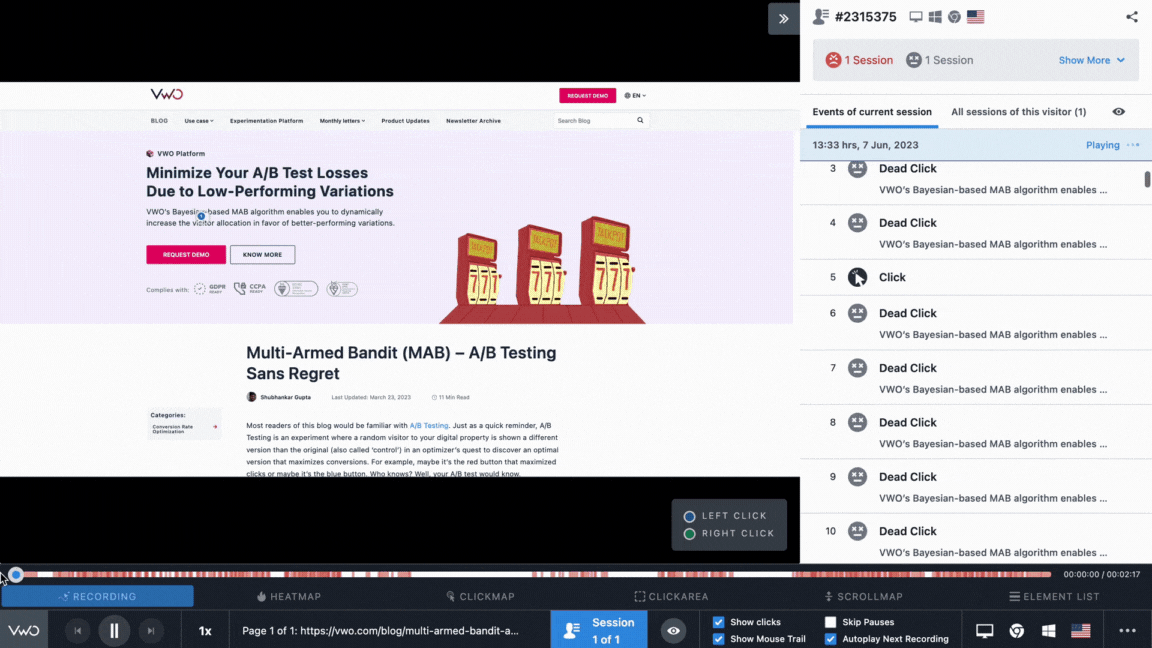
Conversion Optimization Round-up – March 2024
March 2024’s CRO Round-Up zeroes in on enhancing digital marketing with a trio of innovative strategies.
From refining value propositions with simplicity and clarity, inspired by Japanese restaurant displays, to leveraging scroll-depth tracking for deeper insights into user engagement, and optimizing email campaigns via A/B testing for better engagement and conversion rates, this collection offers a rich toolkit for marketers.
It underscores the importance of clear communication, understanding user behavior, and the strategic tweaking of marketing elements to improve overall conversion rates.
Additionally, a case study on call-to-action (CTA) optimization demonstrates the tangible benefits of strategic experimentation in digital marketing.
Three techniques to improve your value proposition
https://conversion-rate-experts.com/value-proposition/
In the insightful piece “Three Techniques to Improve Your Value Proposition,” readers are offered a deep dive into refining value propositions, using the analogy of Japanese restaurant window displays to underline the importance of clarity and appeal in marketing.
This article pinpoints three primary challenges: the lack of clear product/service descriptions, the omission of mentioning all valuable benefits, and vague details about what happens after a purchase. It advocates for a balanced approach, considering both the seller’s and buyer’s perspectives to truly connect with potential customers.

Key recommendations include:
- Utilizing plain language to avoid confusion.
- Highlighting every benefit to underscore the value.
- Using visual aids, such as flowcharts, to clarify the post-purchase journey.
By addressing these aspects, the article suggests businesses can significantly enhance their value proposition, leading to better customer understanding and improved conversion rates.
Scroll-Depth Tracking: What, Why, and How of Monitoring Visitor Engagement
https://vwo.com/blog/scroll-depth-tracking-what-why-and-how-of-monitoring-visitor-engagement/
This article from VWO explores the importance of measuring how far visitors scroll down on a webpage. This metric, known as scroll depth, offers insights into user engagement, revealing whether content buried at the bottom is being seen. The article outlines that scroll depth can be quantified in percentages or pixels, offering a tangible measure of visitor interest.
Optimal scroll depth varies based on the website’s goals, such as generating leads or enhancing user engagement. Factors like industry benchmarks and page objectives help define a ‘good’ scroll depth.
Scroll maps, a type of heatmap, visualize the extent of visitor scrolling, aiding in understanding engagement levels.
The article then highlights the application of scroll-depth data in improving website design and content placement to boost conversions and engagement. Success stories from brands like Elegant Steps, Ubisoft, and Bandwidth illustrate the tangible benefits of informed adjustments based on scroll-depth analysis.

Why Email A/B Testing Is Your Campaign’s Secret Weapon
https://www.nutshell.com/blog/what-is-email-a-b-testing
In this article from Nutshell, Email A/B testing is highlighted as a crucial technique for refining email marketing efforts, aimed at boosting engagement and revenue. This approach involves dispatching two email variants to a segment of subscribers to determine which one yields superior open and click-through rates. Despite its effectiveness, it’s often underutilized by marketers.
The use of email marketing tools can greatly facilitate the process, enabling easy creation and management of test variations. Such tools allow marketers to experiment with various email components, including:
- Subject lines
- Content length
- Visual elements
- Call-to-action (CTA) buttons
The advantages of employing email A/B testing are manifold, offering:
- Enhanced insights into audience preferences
- Increased engagement metrics
- Higher conversion rates
By adopting a strategic approach to A/B testing, marketers can ensure their communications resonate more deeply with their audience, leading to greater campaign success.

Which won? With one CTA or two?
https://guessthetest.com/test/which-won-with-one-cta-or-two/
In a recent conversion rate optimization (CRO) experiment conducted by BingBros Media for an online health and wellness client, a new approach to the “Add to Cart” Call to Action (CTA) proved significantly more effective. The test compared two versions of the CTA: the original, featuring a single “ADD TO CART” button with a quantity selector, against a revamped version which eliminated the quantity selector in favor of a second CTA, “ADD TWO TO CART & SAVE 15%.”

The results were striking. The updated version, with its dual CTA buttons, generated a 13.16% increase in revenue per visitor and a 12.35% rise in total revenue during the week-long test period, translating to a $38,738 revenue boost. This variant achieved a 99% confidence level for outperforming the control setup.
Key insights from the test suggest that reducing purchasing friction by simplifying the decision-making process—via a direct, one-click discount button—can significantly enhance conversion rates. The success of the dual CTA strategy, however, comes with a caution: it’s essential to balance the choice without overwhelming or confusing customers. The less appealing CTA should be clearly the secondary option, ensuring users are guided towards the primary action without the need for extensive deliberation.
For businesses looking to optimize their own CTA strategies, the study underscores the value of testing variations that minimize steps and clarify choices for customers. Incorporating a secondary CTA might also stimulate the decision-making process, potentially boosting conversions, provided the options are presented in a clear and balanced manner.
We hope you enjoyed this month’s Conversion Rate Optimization Round-up!
Claim Your Free Audit Here.















-May-24-2023-03-09-04-3665-PM.png)

 To get started, please enter your details below
To get started, please enter your details below